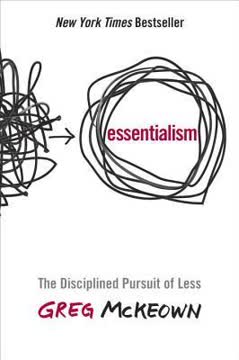Key Takeaways
1. Our brain's pleasure systems drive consumer behavior beyond basic needs
We are awash in these signals: How we style our hair, hold our fork, greet our colleagues, tell a joke, and give gifts are all elements of social signaling.
Evolutionary roots. Our consumption behaviors are deeply rooted in ancient evolutionary adaptations. The human brain has developed specialized systems for evaluating and pursuing rewards, which extend far beyond basic survival needs. These systems process social cues and status signals, influencing our consumer choices in complex ways.
Social signaling. Consumer goods serve as powerful social signals, conveying information about our identity, values, and status to others. This signaling function plays a crucial role in human social interactions and mate selection. Examples of social signaling through consumption include:
- Clothing choices
- Car ownership
- Technology preferences
- Home decor
- Leisure activities
Unconscious motivations. Much of our consumer behavior is driven by unconscious processes. Our brains constantly evaluate products and experiences for their potential social value, often without our awareness. This explains why we may feel drawn to certain brands or products without fully understanding why.
2. Social selection shapes our consumption patterns and status-seeking
Social selection solves the problem of altruism. More than that, though, its evolutionary logic reveals why our social life is so centered on trying to figure people out.
Partner choice. Social selection theory proposes that our consumer behaviors are shaped by the need to attract and maintain valuable social partnerships. This includes romantic partners, friends, and allies. Our choices in clothing, technology, and lifestyle often serve to signal our qualities as potential partners.
Status and cooperation. Contrary to traditional views of status-seeking as purely selfish, social selection reveals how status can promote cooperation. High-status individuals often engage in generous or prosocial behaviors to maintain their position, benefiting the group as a whole.
Signaling traits. Consumer goods allow us to signal various desirable traits:
- Intelligence
- Creativity
- Emotional stability
- Resource abundance
- Cultural knowledge
- Social awareness
3. Cool consumption emerged as a rebellion against hierarchical status systems
The emergence of cool stemmed from an oppositional stance that rejected this dominant hierarchical social structure instead of emulating those on its upper rungs.
Oppositional norm. Cool consumption arose in the 1950s as a form of rebellion against traditional status hierarchies. It rejected the emulation of higher status groups, instead embracing values and styles associated with marginalized groups.
Elements of rebel cool:
- Oppositional style
- Emotional detachment
- Novel experiences
- Sexual signaling
- Redefined masculinity
Transformation of consumerism. Cool consumption played a crucial role in shifting consumer culture from hierarchical to more pluralistic forms. It opened up new routes to status based on cultural knowledge, creativity, and authenticity rather than just wealth or social position.
4. The neurodynamic mind consists of three interacting pleasure machines
There is no coherent you behind your decisions and actions. The existence of a unified self as a central decision maker is an illusion, a convenient fiction, a largely unconscious rationalization.
Three systems. The human mind consists of three interacting "pleasure machines" that guide our decision-making and behavior:
- Survival pleasure machine: Instinctive, fast-acting responses
- Habit pleasure machine: Learned, automatic behaviors
- Goal pleasure machine: Deliberate, conscious decision-making
Conflict and cooperation. These systems often compete for control of our behavior, leading to internal conflicts (e.g., impulsive purchases vs. long-term financial goals). However, they can also work together to navigate complex environments efficiently.
Implications for consumption. Understanding the neurodynamic mind helps explain various consumer behaviors:
- Impulse buying (Survival system)
- Brand loyalty (Habit system)
- Planned purchases (Goal system)
- Conflicts between immediate gratification and long-term goals
5. Consumerism can solve the Status Dilemma by diversifying routes to status
Consumer microcultures create these dimensions—ways that people and groups can be different from one another.
Status Dilemma. Traditional hierarchical societies create a "zero-sum" competition for limited status positions, leading to frustration and unhappiness for most people.
Diversification solution. Consumer culture allows for the creation of numerous "microcultures" or lifestyles, each with its own status system. This proliferation of status routes reduces direct competition and increases overall status availability.
Examples of diverse status routes:
- Professional achievements
- Artistic expression
- Athletic accomplishments
- Subcultural knowledge (e.g., music, fashion)
- Ethical consumption choices
- Digital influence
Increased happiness. By providing more opportunities for individuals to find esteem and belonging, this diversification of status may contribute to overall increases in societal well-being.
6. DotCool reflects the values of the knowledge economy and innovation
Today's knowledge worker is valued for his unconventionality, because originality drives innovation.
Shift from rebellion to innovation. As cool consumption evolved from its rebellious roots, it aligned with the values of the emerging knowledge economy. DotCool emphasizes creativity, learning, and unconventional thinking.
Valued traits in the knowledge economy:
- Creativity
- Adaptability
- Continuous learning
- Problem-solving skills
- Collaboration
- Digital literacy
Cool workplaces. The emphasis on innovation has led to the creation of "cool" work environments that foster creativity and unconventional thinking (e.g., Google's offices, startup culture).
Geek chic. The rise of tech industry influence has elevated traditionally "uncool" pursuits, making intellectual interests and technological skills increasingly desirable and high-status.
7. Ethical consumption aligns status norms with social and environmental benefits
Ethical consumption illustrates why conspicuous consumption, the hierarchical display of wealth, and wasteful consumption aren't necessary elements of consumerism.
Prosocial signaling. Ethical consumption choices (e.g., buying organic, fair trade, or sustainable products) allow consumers to signal their values and concern for social and environmental issues. This creates a form of "conspicuous conservation" where sustainable choices confer status.
Aligning incentives. By making ethical choices cool and status-enhancing, consumer culture can harness social motivations to drive positive change. This approach may be more effective than simply admonishing people to consume less.
Examples of ethical consumption trends:
- Electric and hybrid vehicles
- Reusable products (water bottles, shopping bags)
- Plant-based diets
- Secondhand and vintage clothing
- Local and artisanal goods
Future directions. Developing stronger social signals for sustainable products and transparent production practices could further align consumption with environmental and social goals. This may lead to a new paradigm of consumption that balances individual desires with collective well-being.
Last updated:
Review Summary
Cool: How the Brain's Hidden Quest for Cool Drives Our Economy and Shapes Our World receives mixed reviews. Many praise its intriguing blend of neuroscience, psychology, and economics, offering insights into consumer behavior and the concept of "cool." Critics appreciate the cultural history sections but find earlier chapters dry. Some reviewers disagree with the authors' pro-consumerist stance. The book explores how the pursuit of status and coolness influences purchasing decisions, challenging anti-consumerist views. While some find it thought-provoking, others criticize its evolutionary arguments and perceive a lack of cohesion between economics and coolness discussions.
Similar Books
Download PDF
Download EPUB
.epub digital book format is ideal for reading ebooks on phones, tablets, and e-readers.










